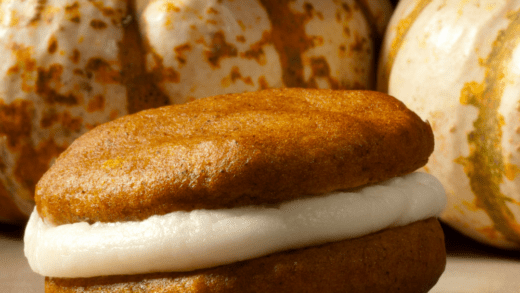Birthdays have been celebrated around the globe for thousands of years. Each culture has unique traditions and baked goods to make birthday celebrations memorable and fun. In this three-part blog series, we’ll discuss the history, traditions, and presentation of baked goods. So, let’s start with the sweet history of baked goods.
Cookies, Cakes and Candles
Historians believe that Ancient Egyptians were the first to celebrate birthdays, because Egyptians believed that pharaohs became gods when they were crowned. Coronations were considered the “birth” of a god and celebrated. Food, drink, and festivities occurred when each new pharaoh was born, similar to “birthday parties” today. For the citizens of Egypt, “Khak” cookies were also commonly served on their birthdays to honor the sun god, Ra, symbolizing another successful year around the sun. The cookies are mild in flavor, consisting of flour, butter, sugar, nutmeg, vanilla, cinnamon, and milk. The Khak cookies are still commonly used to this day.
Cakes were also common birthday celebratory foods in Ancient Greece and Ancient Rome. Ancient Romans typically served cakes at birthdays and weddings. The circle cakes were made from flour, nuts, leavened yeast, and honey. Honey is what provides the sweet flavor for these cakes. Ancient Greece celebrated birthdays with cakes, specifically the sixth day of every lunar year with moon-shaped cakes that included lit candles. The cakes were offered up for Ancient Greece’s goddess of the moon, Artemis. The lit candles represented the moon’s shine. Artemis’ candles were considered the first “birthday candles.” Cake candles continued to be used in other ancient, Pagan cultures. Pagan cultures believed that fire from the lit candles scared away evil spirits and the smoke from candles carried prayers to the gods. People made noise and lit candles to ward off evil spirits on a person’s birthday.
Evolution and Commercialization
Over the years, birthday cakes evolved. In the early 1400’s, German bakeries first started selling sweet cakes, specifically marketed for birthday parties of young children. The birthday parties were referred to as Kinderfest and the cakes were called Geburtstagorten. These cakes were designed for the wealthy, but by the Industrial Revolution, the birthday cakes were widespread in Germany.
By the 1700’s, German children were greeted on their birthday with a cake that included candles, multiple layers of cake, icing, and decorations. Granulated and confectioner’s sugars were commonly used to achieve this cake. Candles were also used as a decoration for the cake during this time. The candles totaled the child’s years in age plus one, to represent hope for another healthy year. In Switzerland in 1881, the first account of blowing out candles is recorded. The candles on birthday cakes each represented a year of life and were blown out one by one.
A (nearly) Universal Tradition
The tradition of using decorated cakes and candles has continued for many Americans with European descent as customary for birthday celebrations. The cakes have evolved to include multiple layers, fillings, and flavors. Cake variations such as cupcakes are also commonly used in the U.S. Other cultures celebrate with different types of cakes, but some variation of the birthday cake has become a staple in almost every culture across the world. Celebratory cakes continue to evolve from their sweet history that dates all the way back to Ancient Egypt, Greece, and Rome.
Regardless of the time in history, birthday cakes are generally sweet, typically resulting from sugar or honey in the batter, and considered a treat. Confectioner’s sugar is most commonly used in the icing, fondant and frosting, which gives many birthday cakes their distinct visual appearance. The smooth texture of the confectioner’s sugar provides a desired smooth texture for frostings. The sugars in fruit, candies, or sprinkles are used as decorations and garnishes, providing the final sweet touch on the birthday staple.
In many ways, the history of birthday cakes also demonstrates the history of sugar being used in baked goods and for celebrations. Starting thousands of years ago, Egyptians used the sweet cookies called Khaks as a sweet treat for celebration, and to today sweet, elaborate cakes, decorated with sugar and frosting, are used to celebrate. Regardless of the year, country, or culture, sugar provides a base for a fun treat to sweeten your birthday celebration. In our next blog post, we’ll discuss how birthday cakes vary across the world, with almost every cake incorporating sugars to enhance the flavor, texture, and visual appeal.
_______________________________________________________
This blog is an excerpt from Elizabeth Hagan’s lesson plan Bearthday Celebrations, which was awarded and produced by the Home Baking Association, that teaches the sweet history and traditions relating to birthdays while incorporating food photography and presentation. In response to the Covid-19 Pandemic, millions of Americans were staying in, baking at home, and celebrating birthdays alone; so, this lesson gives students the opportunity to bake, celebrate, and experience multicultural foods, all while staying home.
The lesson meets the following objectives using a 5-day plan:
- Briefly explain the history of birthday celebrations and cakes
- Identify and describe birthday traditions celebrated in various countries and cultures around the world
- Research and select a baked birthday dessert to prepare and plate in an aesthetically pleasing way
- Photograph and describe the birthday traditions to peers
- Prepare a baked birthday dessert for family member or friend for their birthday
- Form connections with others during the pandemic, using a baked good
References:
Blog, D. (2013, January 13). Kinderfest. Retrieved March 30, 2021, from https://delicioushistoryblog.wordpress.com/tag/kinderfest/
Nowak, C. (2020, August 14). Why do we eat birthday cake? Retrieved March 30, 2021, from https://www.rd.com/article/origin-of-birthday-cake/
University, C. (2017, April 28). The real reason we eat cake on birthdays. Retrieved March 30, 2021, from https://spoonuniversity.com/lifestyle/origin-of-birthday-cake





Get Social with #MoreToSugar